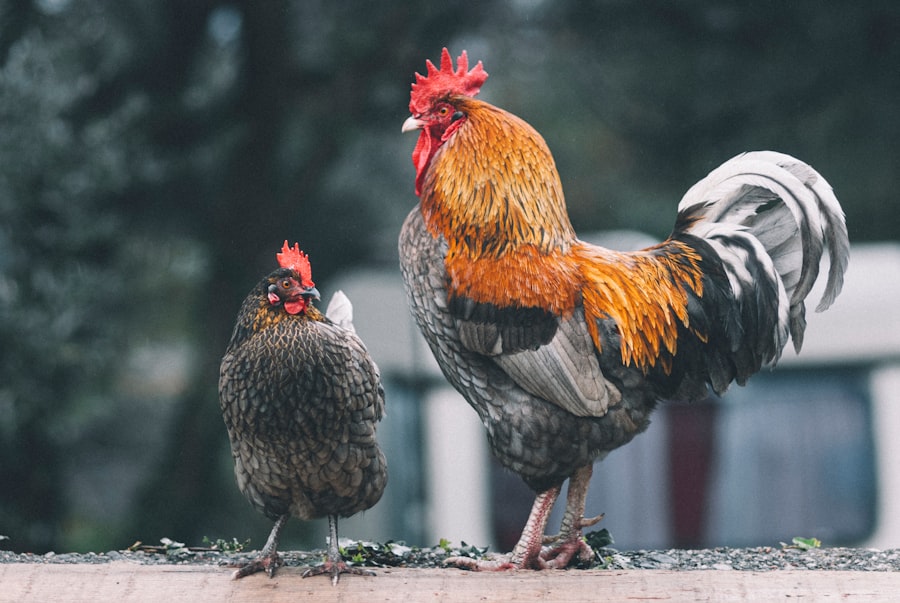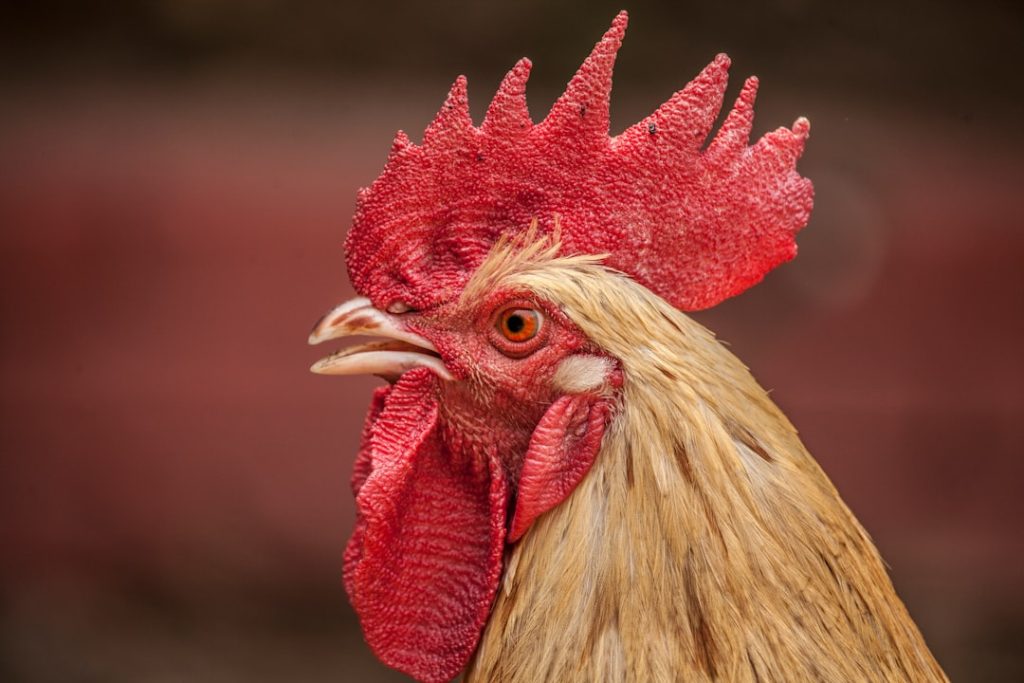Proper crate time for chickens is essential for their overall well-being and productivity. Crate time refers to the period during which chickens are confined to a crate or cage, typically for transportation, protection, or management purposes. This practice is crucial for ensuring the safety and health of the birds, as well as for maintaining a controlled environment for various stages of their growth and development.
Additionally, crate time allows for easier monitoring and management of the birds, which is important for ensuring their welfare and productivity. Proper crate time also plays a significant role in preventing injuries and reducing stress among chickens. When chickens are properly confined in crates, they are less likely to engage in aggressive behaviors, such as pecking or fighting, which can lead to injuries and even death.
Furthermore, crate time provides a secure and controlled environment for the birds, protecting them from predators, adverse weather conditions, and other potential hazards. By providing a safe and comfortable space for chickens during crate time, farmers can effectively minimize stress and ensure the overall well-being of their flock.
Table of Contents
- 1 Factors to Consider When Determining Crate Time for Chickens
- 2 Recommended Crate Time for Different Stages of Chicken Growth
- 3 How to Ensure Comfort and Safety for Chickens During Crate Time
- 4 Potential Health and Behavioral Issues Related to Prolonged Crate Time
- 5 Alternatives to Crate Time for Chickens
- 6 Finding the Balance for Optimal Chicken Welfare
- 7 FAQs
- 7.1 How long should chickens be kept in crates?
- 7.2 What are the reasons for keeping chickens in crates?
- 7.3 What are the potential negative effects of keeping chickens in crates for too long?
- 7.4 How can chickens be kept comfortable during transportation or temporary housing in crates?
- 7.5 Are there regulations or guidelines for the transportation and housing of chickens in crates?
Key Takeaways
- Proper crate time is crucial for the overall well-being and productivity of chickens.
- Factors such as age, breed, and environmental conditions should be considered when determining crate time for chickens.
- Recommended crate time varies for different stages of chicken growth, from chicks to adult chickens.
- Ensuring comfort and safety for chickens during crate time involves providing adequate space, ventilation, and access to food and water.
- Prolonged crate time can lead to health issues and behavioral problems in chickens, emphasizing the need for finding a balance for optimal welfare.
- Alternatives to crate time, such as free-range or pasture-raised systems, can provide chickens with more natural and stimulating environments.
- Finding the balance between crate time and alternative systems is essential for ensuring optimal welfare for chickens.
Factors to Consider When Determining Crate Time for Chickens
Purpose of Crate Time
One crucial factor to consider is the purpose of crate time, whether it is for transportation, protection, or management. For instance, chickens may require shorter crate time for transportation compared to protection from adverse weather conditions.
Age and Stage of Growth
The age and stage of growth of the chickens must also be considered, as younger birds may require more frequent breaks and shorter crate time compared to older, more mature birds.
Crates and Environmental Conditions
The size and design of the crates or cages used for confining the chickens are also important factors to consider. The crates must provide enough space for the birds to move comfortably and exhibit natural behaviors, such as standing, perching, and stretching their wings. Adequate ventilation and access to food and water are also essential considerations when determining crate time for chickens.
Recommended Crate Time for Different Stages of Chicken Growth

The recommended crate time for chickens varies depending on their stage of growth and development. For newly hatched chicks, crate time should be limited to short intervals to allow for rest, access to food and water, and opportunities for exercise. As the chicks grow and become more independent, crate time can be gradually increased, taking into account their need for social interaction and physical activity.
For young pullets and cockerels, crate time should be balanced with opportunities for free-range activities to promote healthy growth and development. During the laying period, hens may require longer periods of crate time to ensure proper egg production and management. However, it is important to provide adequate space, nesting areas, and perches within the crates to allow for natural behaviors and comfort.
Roosters may also require crate time for management purposes, such as breeding programs or protection from aggressive behavior. Overall, the recommended crate time for different stages of chicken growth should prioritize the birds’ welfare and provide opportunities for natural behaviors while achieving the intended purpose of confinement.
How to Ensure Comfort and Safety for Chickens During Crate Time
To ensure the comfort and safety of chickens during crate time, several measures can be taken to create a suitable environment for the birds. Firstly, it is essential to provide crates or cages that are spacious enough to accommodate the birds comfortably. The crates should allow for natural behaviors such as standing, perching, and stretching their wings.
Adequate ventilation is also crucial to maintain air quality and regulate temperature within the crates. Access to food and water is another important consideration when confining chickens to crates. The birds should have continuous access to fresh water and appropriate feed to meet their nutritional needs.
Additionally, providing suitable bedding material within the crates can enhance comfort and hygiene for the birds during crate time. Regular cleaning and maintenance of the crates are essential to prevent the buildup of waste and maintain a clean and sanitary environment for the chickens. Furthermore, it is important to monitor the birds regularly during crate time to ensure their well-being and address any potential issues promptly.
This includes checking for signs of stress, injuries, or illness among the chickens. By implementing these measures, farmers can ensure that chickens are comfortable and safe during crate time, promoting their overall welfare and productivity.
Prolonged crate time can lead to various health and behavioral issues among chickens if not managed properly. One common issue associated with prolonged confinement is stress, which can manifest in behaviors such as feather pecking, aggression, or reduced egg production in laying hens. Additionally, lack of exercise and social interaction during prolonged crate time can lead to muscle weakness and reduced bone density in chickens, affecting their overall health and well-being.
Furthermore, prolonged crate time can increase the risk of developing respiratory problems due to poor air quality within the confined space. Ammonia buildup from accumulated waste can lead to respiratory irritation and infections among the birds. Additionally, limited access to natural light and outdoor environments during prolonged crate time can disrupt the birds’ natural circadian rhythms and negatively impact their overall health.
To mitigate these potential issues related to prolonged crate time, it is important to provide regular breaks for the chickens to engage in free-range activities and exercise. Access to natural light, fresh air, and opportunities for social interaction can help alleviate stress and promote overall well-being among confined chickens. Additionally, implementing enrichment activities within the crates can stimulate natural behaviors and reduce boredom during prolonged confinement.
Alternatives to Crate Time for Chickens

Mobile or Rotational Grazing Systems
One alternative is the use of mobile or rotational grazing systems. These systems allow chickens to access outdoor environments while still being managed within a controlled area. This approach provides opportunities for natural foraging behaviors and exposure to sunlight and fresh air.
Enriched Colony Housing Systems
Another alternative is the use of enriched colony housing systems. These systems provide more space and opportunities for social interaction compared to traditional cages or crates. Enriched colony systems include features such as perches, nesting areas, dust bathing areas, and other elements that promote natural behaviors among confined chickens. These systems allow for better welfare outcomes while still providing management benefits like easier monitoring and disease control.
Regular Rotation of Flocks in Free-Range Systems
Implementing regular rotation of flocks in free-range systems can also provide chickens with access to outdoor environments while still allowing for management and protection from predators. By exploring these alternatives to prolonged crate time, farmers can promote better welfare outcomes for their chickens while still achieving their management goals.
Finding the Balance for Optimal Chicken Welfare
In conclusion, proper crate time is essential for ensuring the safety, health, and productivity of chickens at various stages of growth and development. When determining crate time for chickens, it is important to consider factors such as the purpose of confinement, age and stage of growth, crate design, ventilation, access to food and water, as well as opportunities for natural behaviors. By providing a comfortable and safe environment during crate time, farmers can minimize stress and promote overall welfare among confined chickens.
However, prolonged crate time can lead to potential health and behavioral issues among chickens if not managed properly. It is crucial to monitor the birds regularly during crate time and provide opportunities for exercise, social interaction, and enrichment activities to mitigate these issues. Additionally, exploring alternative methods such as mobile grazing systems or enriched colony housing can provide better welfare outcomes while still achieving management goals.
Finding the balance between proper crate time and alternative management methods is essential for promoting optimal welfare among chickens. By prioritizing the birds’ well-being while still meeting management needs, farmers can ensure that their flocks thrive in a controlled environment while still having opportunities for natural behaviors and social interaction. Ultimately, proper management practices that prioritize chicken welfare will lead to healthier, more productive flocks and contribute to sustainable poultry production.
If you’re considering keeping chickens, it’s important to know how long to keep them in their crates before transitioning them to a coop. According to a helpful article on Poultry Wizard, it’s crucial to provide chickens with a suitable living environment to ensure their well-being and productivity. For more information on how to properly insulate a chicken coop, check out this article for helpful tips and advice.
FAQs
How long should chickens be kept in crates?
Chickens should only be kept in crates for short periods of time, such as during transportation or for temporary housing. It is not recommended to keep chickens in crates for extended periods of time.
What are the reasons for keeping chickens in crates?
Chickens may be kept in crates for transportation, such as when being moved to a new location or to a processing facility. They may also be temporarily housed in crates for medical treatment or to separate them from the rest of the flock for various reasons.
What are the potential negative effects of keeping chickens in crates for too long?
Keeping chickens in crates for extended periods of time can lead to stress, discomfort, and health issues for the birds. It can also restrict their movement and natural behaviors, leading to decreased welfare and potentially lower egg production.
How can chickens be kept comfortable during transportation or temporary housing in crates?
To keep chickens comfortable during transportation or temporary housing in crates, it is important to provide adequate ventilation, space, and access to food and water. The crates should also be kept clean and free from sharp edges or other potential hazards.
Are there regulations or guidelines for the transportation and housing of chickens in crates?
Yes, there are regulations and guidelines set by government agencies and animal welfare organizations that dictate the proper transportation and housing of chickens in crates. These regulations often include specifications for crate size, ventilation, and access to food and water.
Meet Walter, the feathered-friend fanatic of Florida! Nestled in the sunshine state, Walter struts through life with his feathered companions, clucking his way to happiness. With a coop that’s fancier than a five-star hotel, he’s the Don Juan of the chicken world. When he’s not teaching his hens to do the cha-cha, you’ll find him in a heated debate with his prized rooster, Sir Clucks-a-Lot. Walter’s poultry passion is no yolk; he’s the sunny-side-up guy you never knew you needed in your flock of friends!







